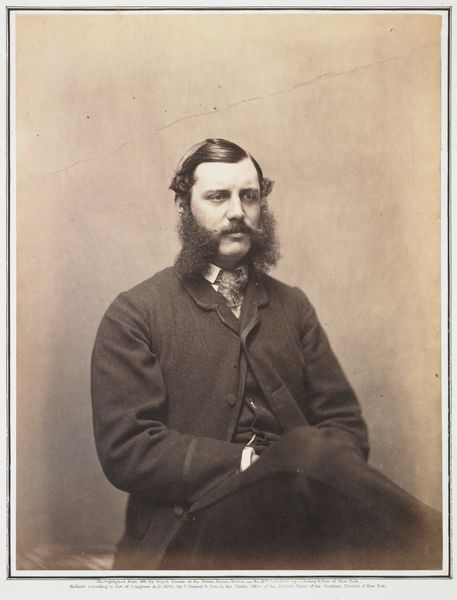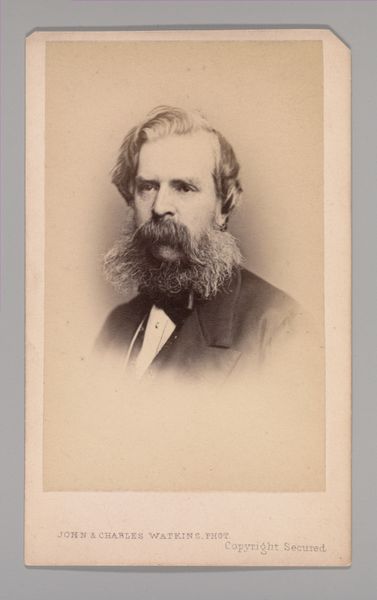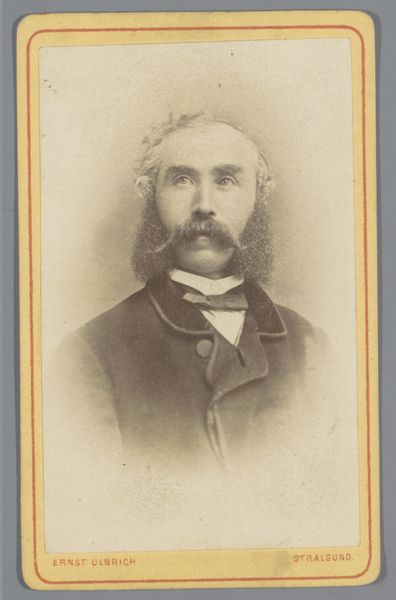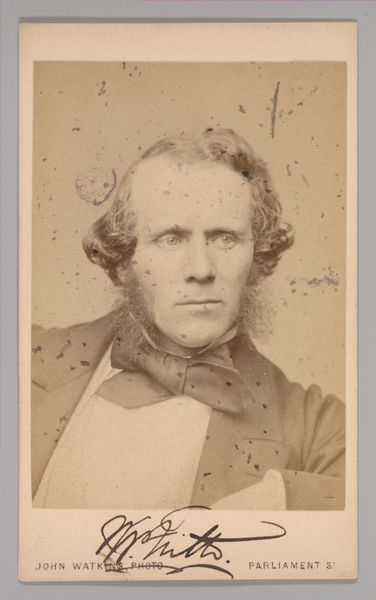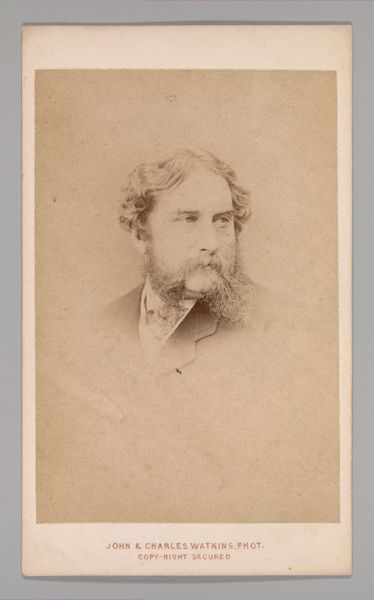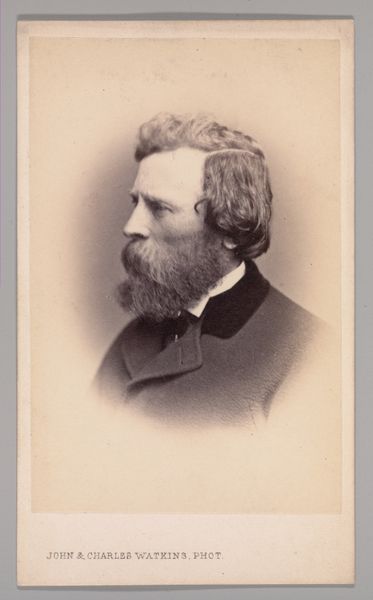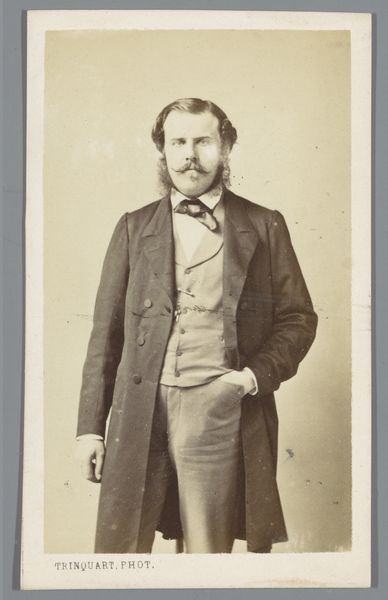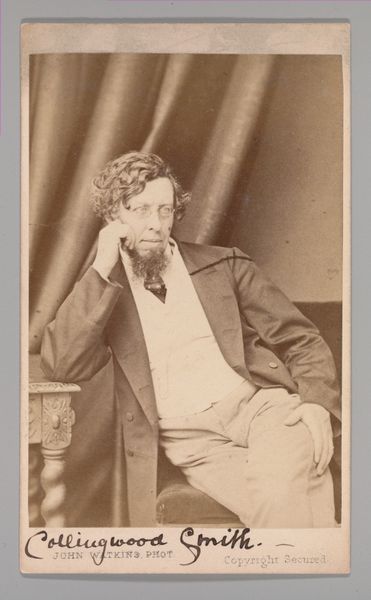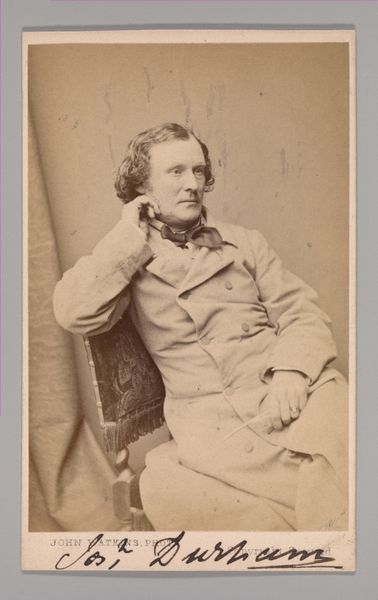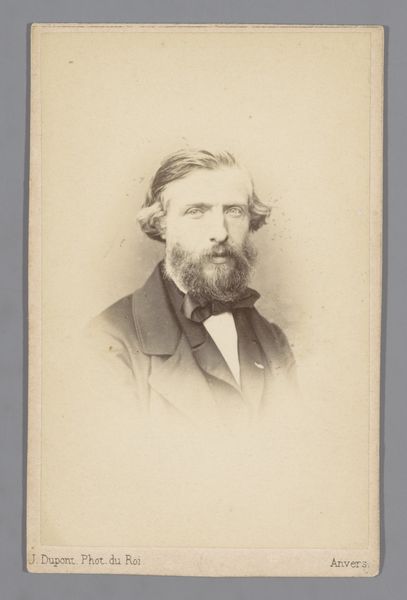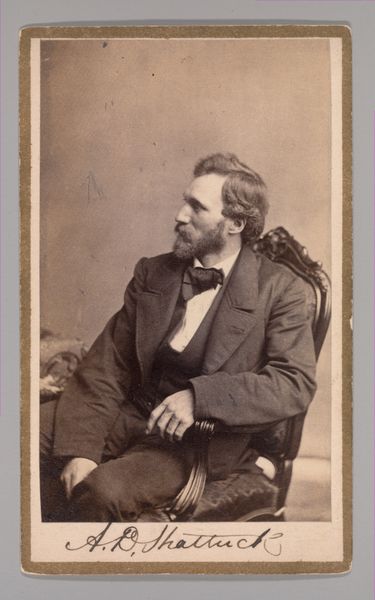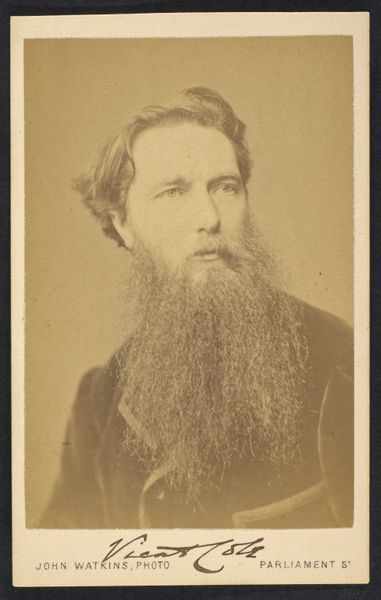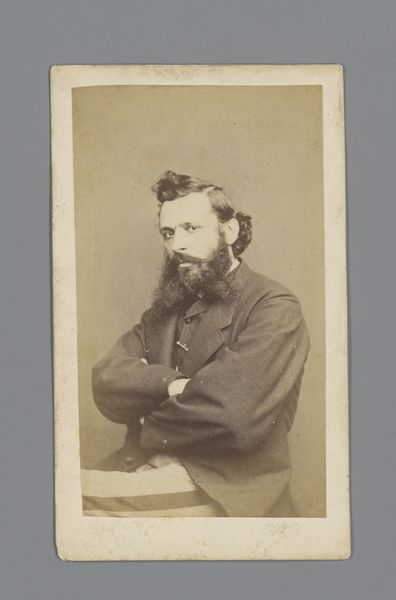![[Thomas Faed] by John and Charles Watkins](/_next/image?url=https%3A%2F%2Fd2w8kbdekdi1gv.cloudfront.net%2FeyJidWNrZXQiOiAiYXJ0ZXJhLWltYWdlcy1idWNrZXQiLCAia2V5IjogImFydHdvcmtzLzhiYzNiNjEzLWQ4YjMtNDczYS05NjBlLTc2MWQ2NDIzNmZlYi84YmMzYjYxMy1kOGIzLTQ3M2EtOTYwZS03NjFkNjQyMzZmZWJfZnVsbC5qcGciLCAiZWRpdHMiOiB7InJlc2l6ZSI6IHsid2lkdGgiOiAxOTIwLCAiaGVpZ2h0IjogMTkyMCwgImZpdCI6ICJpbnNpZGUifX19&w=3840&q=75)
Dimensions: Approx. 10.2 x 6.3 cm (4 x 2 1/2 in.)
Copyright: Public Domain
Curator: Let's take a moment to consider this photograph, “[Thomas Faed],” attributed to John and Charles Watkins. It’s a gelatin-silver print and albumen print from the 1860s, housed here at the Metropolitan Museum of Art. What's your initial reaction? Editor: Sepia dreams, Curator! The image exudes a feeling of pensiveness, maybe even a bit of melancholy. That soft, hazy light swirling around his hair and beard, framing a face that could launch a thousand thoughts. Curator: Absolutely. The photographic portrait gained prominence during this period, democratizing access to representation, even as the photographic process reflected specific class and gender dynamics. Thomas Faed was a successful painter and the image's Romantic style reflects the sensibilities of his art. Editor: Right! There's this deliberate air about it. His cloak casually draped. I mean, do you think he spent ages crafting this "natural" pose, a look meant to capture his artistic soul? It’s like performance, a deliberate construction. Curator: Precisely. Portraits such as this one provided a vital conduit for reinforcing prevailing societal values. Here we see the valorization of the intellectual, the man of artistic standing and cultural capital. The very act of commissioning such a portrait denotes a claim to power and visibility. Editor: So true, and what about those dreamy eyes looking slightly off center? It's as though he's trying to gaze straight into your soul. It's both alluring and distancing—quite clever for a portrait meant to inspire awe! I suppose, given the limitations of the period, such portraits had to be extremely staged and composed? Curator: Indeed. The subject needed to be relatively still for the exposure time, yet photographers used a range of strategies to capture individuality. His gaze deviates from direct address, allowing for contemplation. This, in its time, may have communicated his particular artistic sensibility to potential audiences and patrons. Editor: Looking at it now, I am considering the legacy of images, the constant dance between intentionality and interpretation. Every photo becomes a mirror reflecting not just the subject, but also us. It reminds me we, the viewers, are inevitably a part of the picture, coloring it with our own present experiences. Curator: I agree. We imbue the work with meanings resonating within current conversations around gender, identity and power. Editor: Well said. So, much for such a seemingly simple picture to communicate still. Curator: It's what renders it endlessly interesting.
Comments
No comments
Be the first to comment and join the conversation on the ultimate creative platform.
